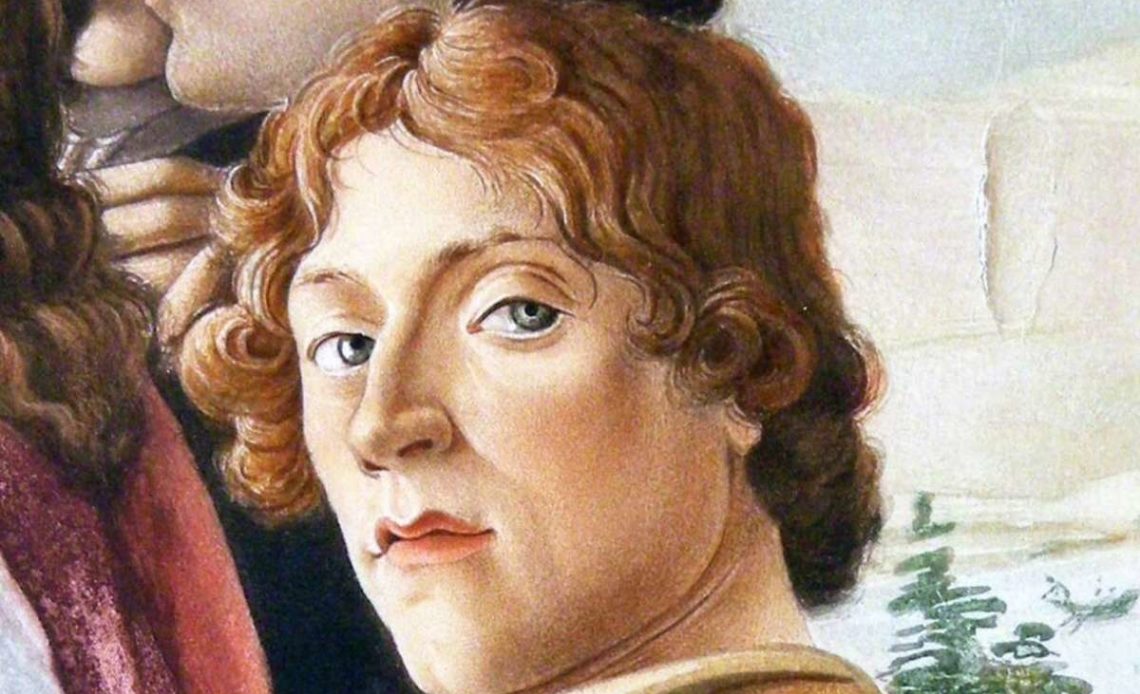The nickname Botticelli means small barrel: Who is Sandro Botticelli?
His Coronation of the Virgin for a church in San Marco in 1490 marks the beginning of a religious crisis that turned Botticelli's life upside down and affected his art.

(1445-1510) Italian painter. Among the great Italian Renaissance painters, he has reached a personal and independent style with his line and volumes created as the greatest pattern master in Europe. He was born in Florence. His real name is Alessandro di Mariano Filipepi. He is known by the nickname "Botticelli", which means small barrel. His father was a painter and he had three siblings. The Botticelli name was inherited from his older brother, Giovanni, who was a pawnshop.
Alessandro di Mariano di Vanni Filipepi (1445 – May 17, 1510), known as Sandro Botticelli, was an Italian painter of the Early Renaissance. Botticelli's posthumous reputation suffered until the late 19th century, when he was rediscovered by the Pre-Raphaelites who stimulated a reappraisal of his work.
It is thought that he studied painting under Fra Filippo Lippi. He started working for a jeweler in Florence. Such cooperation between painters and jewelers was common at that time. In 1470 he established his own workshop, and in 1472 he took Lippi's son Filippino Lippi (1457-1504) with him as an assistant.
Verrocchio's and later Antonio Pollaiuolo's influences are found in youth products. By the mid-1470s his style was becoming more and more personal, and much of his later work was equally personal.
The Power, painted in 1470 for the Arte di Mercanzia in Florence, is one of Botticelli's earliest works. In 1475, Giuliano de Medici commissioned him with a pennant with Pallas's picture for a tournament. When Botticelli became known for the support of the Medicis, he began to take orders. In 1476-1477 in Florence, he painted the Offering of Allegiance to the Magi with Cosimo de Medici and his family for the Church of Santa Maria Novella. In 1478, he received a political order to show the enemies of the Medici family, the Pazzis, and their collaborators. In this fresco he made on the Porta della Dogana (Dogana's Gate), he depicts his collaborators hanging. In the same period, he also made portraits that deeply grasp the personality of his models and gain importance with the power and precision of the pattern. The posthumous portrait of Giuliano de Medici is one of them.
Important allegorical paintings commissioned by Botticelli for the Medici Villas document his close relations with the Medici in Florence and humanists such as Marsilio Ficino and Angelo Poliziano, who were affiliated with Cosimo de'Medici's Platonic Academy. His works Spring, The Birth of Venus, and Venus and Mars visualize the Neo-Platonist ideas of Botticelli's patrons and humanists around them. These paintings have been loved for ages with the poetry they contain.
The fresco of St. Augustine, showing Botticelli's mastery of the fresco technique, is in the Ognissanti Church in Florence. In 1481, Botticelli was invited to the Vatican with a group of Tuscan and Umbrian artists to work on the wall decoration of the Sistine Chapel. He made two compositions in the Sistine Chapel that portray scenes from the lives of Jesus and Moses. He also painted the frescoes of Villa dello Spedaletto by Lorenzo de'Medici in Tuscany and three frescoes in Villa Lemmi near Florence.
His Coronation of the Virgin for a church in San Marco in 1490 marks the beginning of a religious crisis that turned Botticelli's life upside down and affected his art. Botticelli focused a lot on Madonna and Child Jesus and painted countless paintings full of emotion and creativity in this field. The Madonna with Pomegranate in 1487 is one of them. The melancholy emphasized in these paintings is a symptom of Botticelli's increasing emotional uneasiness. In the 1480s and 1490s, he painted many paintings dealing with the murder of Jesus and he's going to the tomb. The series of paintings he painted on parchment for Dante's Divine Comedy between 1490 and 1497 reveals his power of drawing.
Around 1500, significant changes begin to be seen in Botticelli's style. The execution of this cleric Savonarola in 1498 is considered an influence. Simon, one of Botticelli's brothers, also supported Savonarola, who wanted serious reforms in the church, opposed the Medici rule and became dominant in Florence with the overthrow of the Medici in 1494. Although Botticelli did not directly participate in these religious and political movements, he was closely watched and influenced by his brother.
Botticelli's Mystical Birth in 1501 is a work of smaller size, rich in color, and using relatively different techniques. It is seen that the narration and the handling of the figures are more abstract. Both this work and the Symbolic Crucifixion, completed in 1505, are paintings that evoke the suffering of a period of depression.
The uneasiness of its silhouettes and lines, loaded with tragic emotions, creates the impression of a return to the unreal elements of 14th-century painting.
